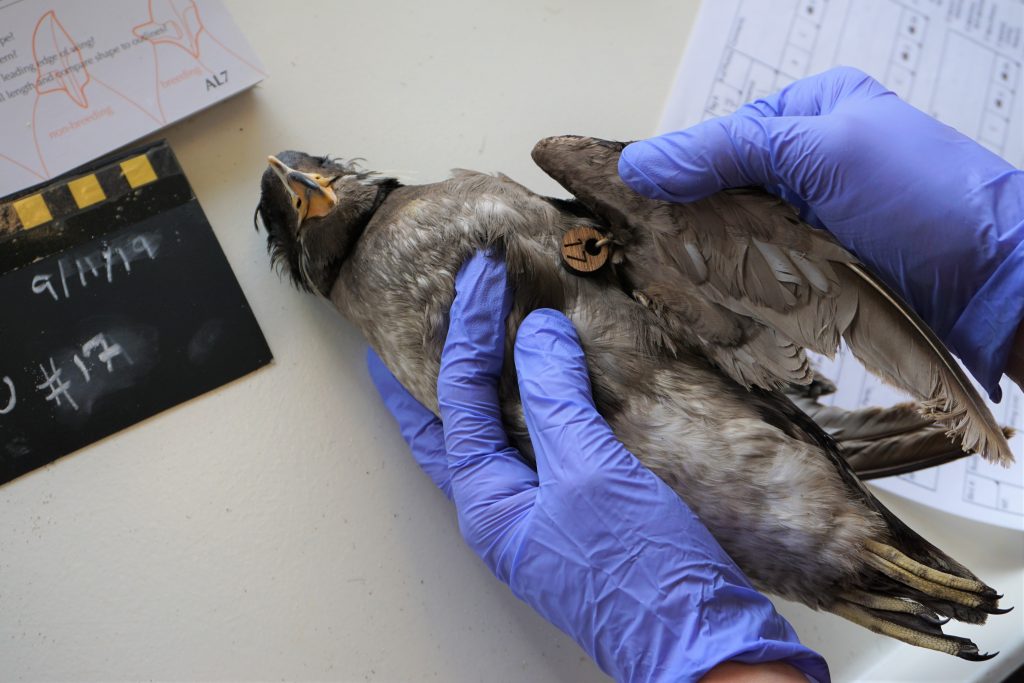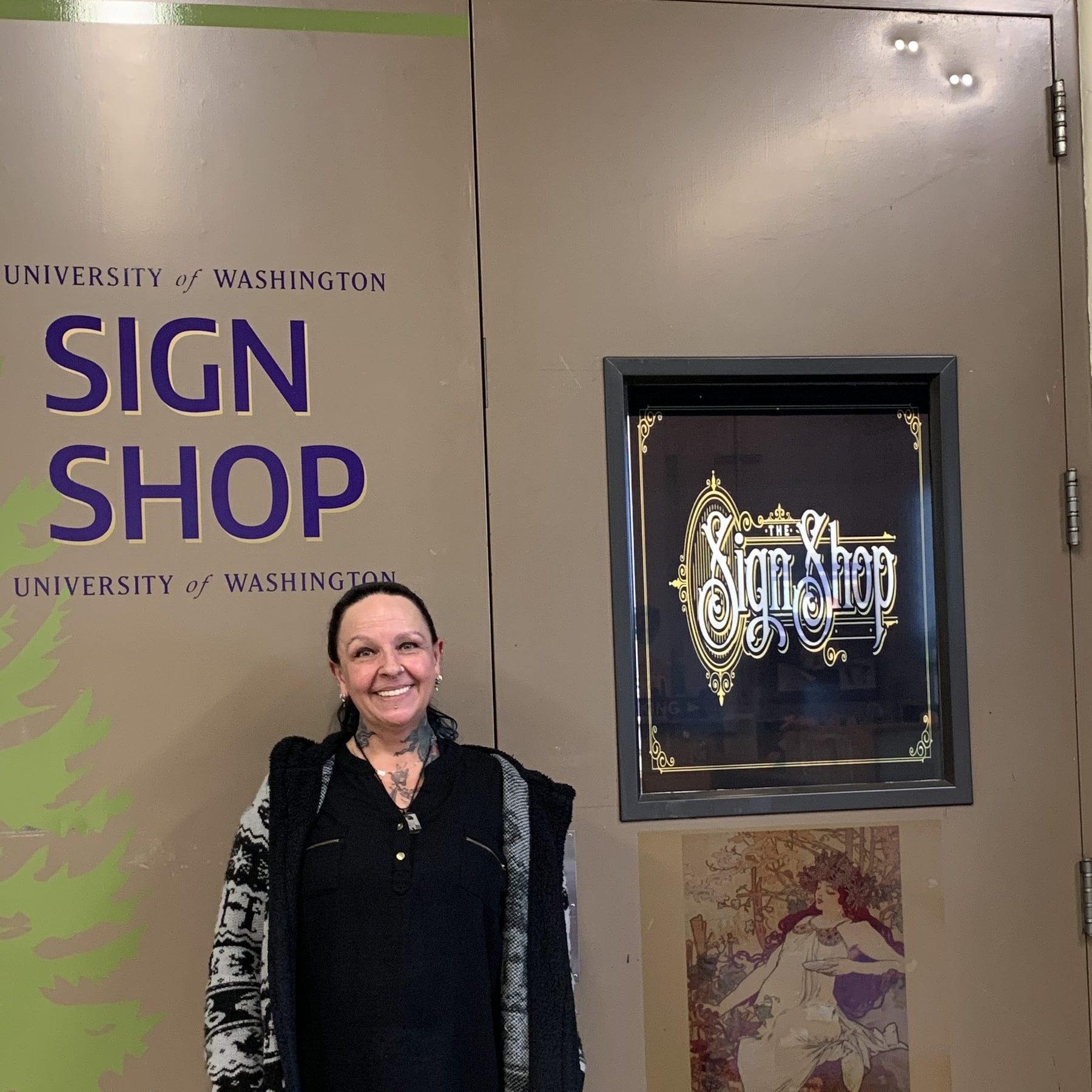COASSTers who have surveyed with us since at least 2019 will probably remember our hunt for the perfect, sustainable bird-marking tag.

This multi-year process started by recruiting helpers, from both our surveyor and our intern teams, and ended when we found the best combination of sustainability and user-friendliness: hemp twine paired with wooden tags.
COASSTers have now been surveying with the wooden tags for a few years, and we wanted to share an interesting update that answers the common question: what is the source of wood for your tags?
On the University of Washington (UW) campus – where the COASST staff offices are located – we are blessed with a fantastic tree canopy: more than 10,000 trees growing over 643 acres. A team of trained facilities staff manage these trees, ensuring natural lifespans and removing trees that become old or sick. The UW has a unique initiative where these removed trees are given a second life, through the Salvage Wood program. Instead of felling trees and removing them from campus, UW dries, cuts, and processes them into small pieces before handing them over to master carpenters. They create a variety of items that are used across campus: name plates, benches, and beautiful conference tables.
COASST is also one of the lucky recipients of this recycled wood. When we need more tags for our beached bird surveyors, we reach out to the UW Sign Shop, run by designer and materials expert Jaime Pabst.

At the UW, Jaime uses her unique skillset to design and produce a wide range of essential campus products, from building signage that meets accessibility requirements, to large murals that line the entryways of some of the university’s newest buildings. She was the one to first suggest we use the Salvage Wood program!
The COASST tags start out in the Sign Shop as thinly-sliced campus wood. Jaime places each board in a laser engraving machine that is programmed to exact specifications, including the size and placement of each tag hole, and the number label. She also oversees quality control, ensuring that the tags are cut and engraved without burning too much. That laser is hot!





Once Jaime and her engraving machine finish their work, the tags are delivered to our team of COASST interns. They carefully load tags into rings and small baggies for survey kits and supply requests.
We love the unique, local story behind our wooden tags. If you can think of another source of sustainable wood that we could use for these tags in the future, we would love to hear it! Comment below! We are always looking for new ideas and resources.
